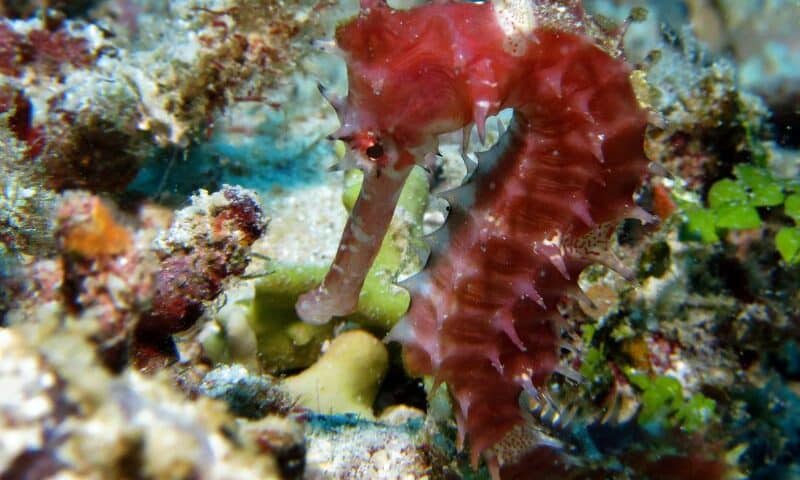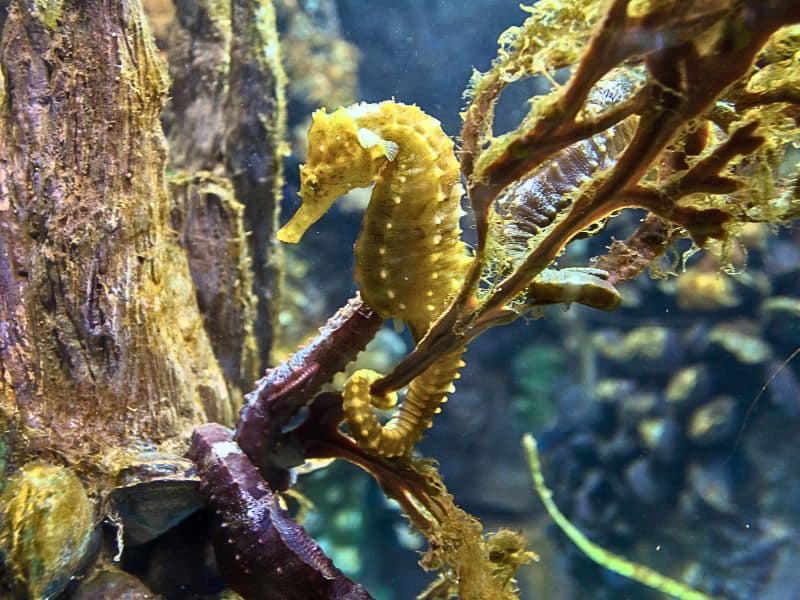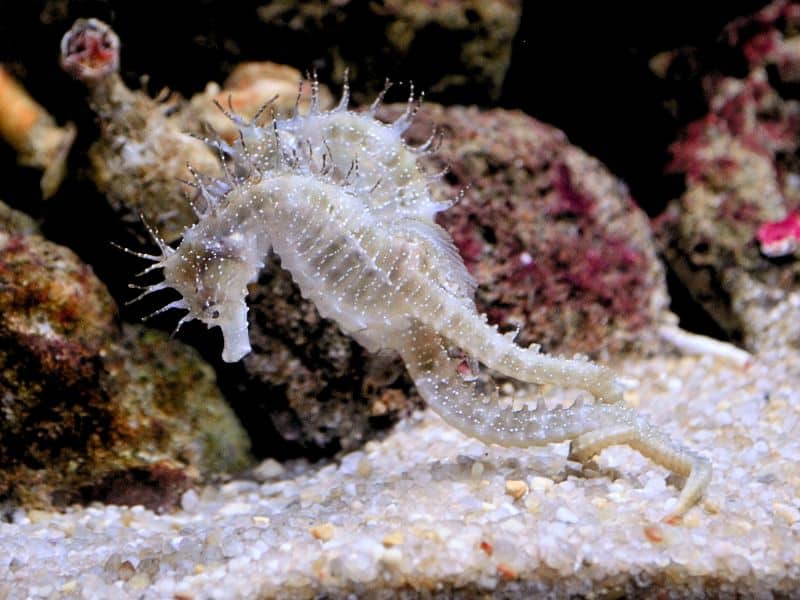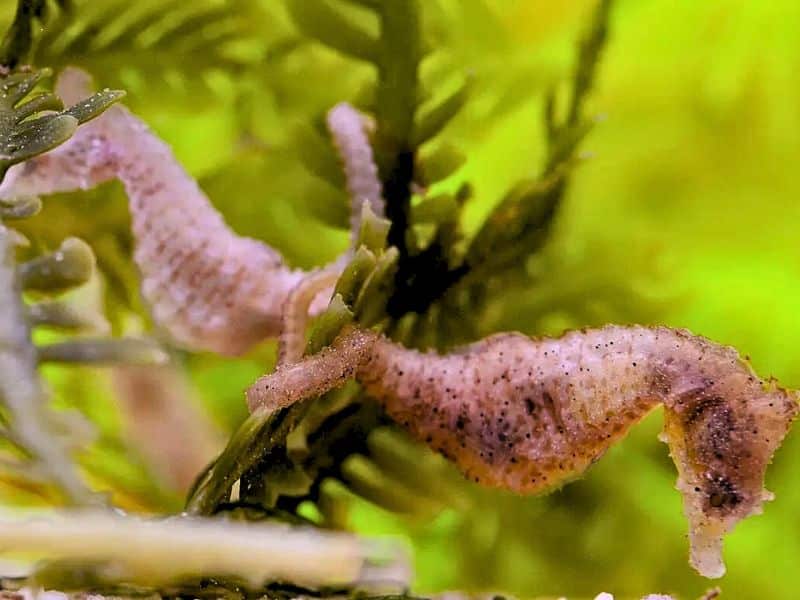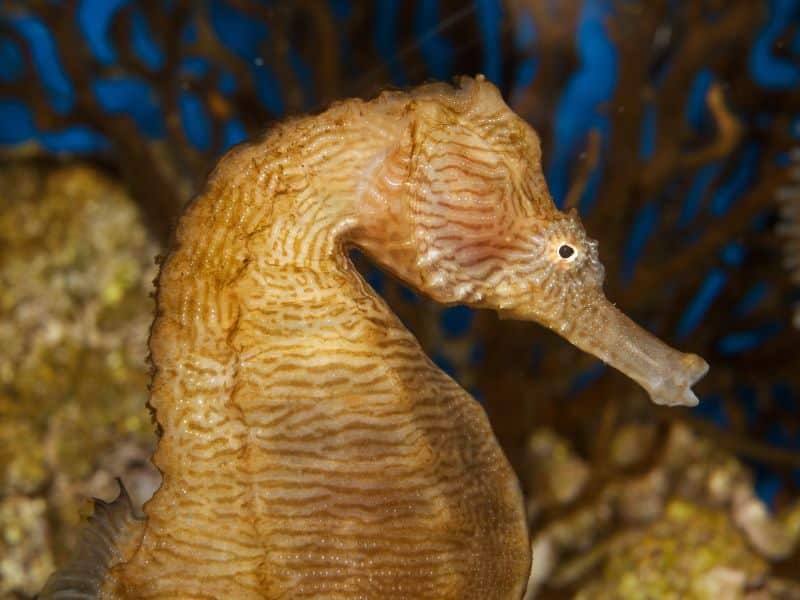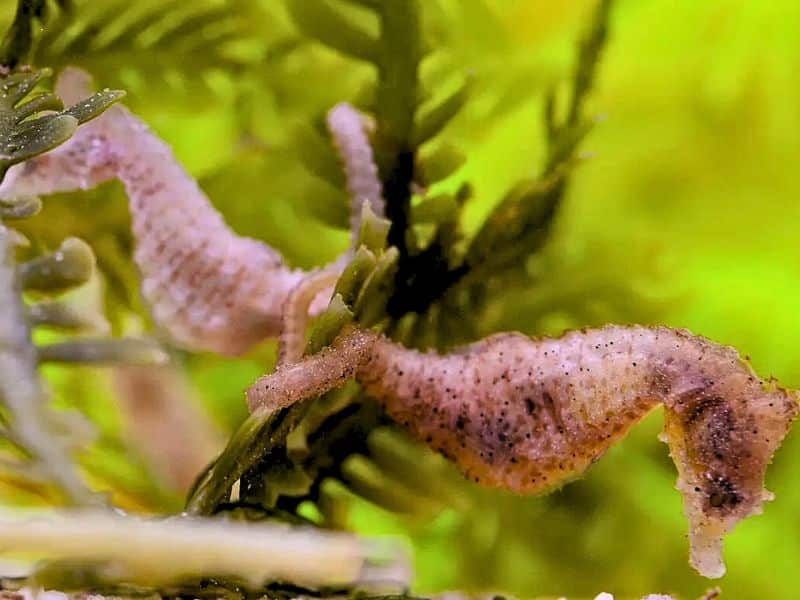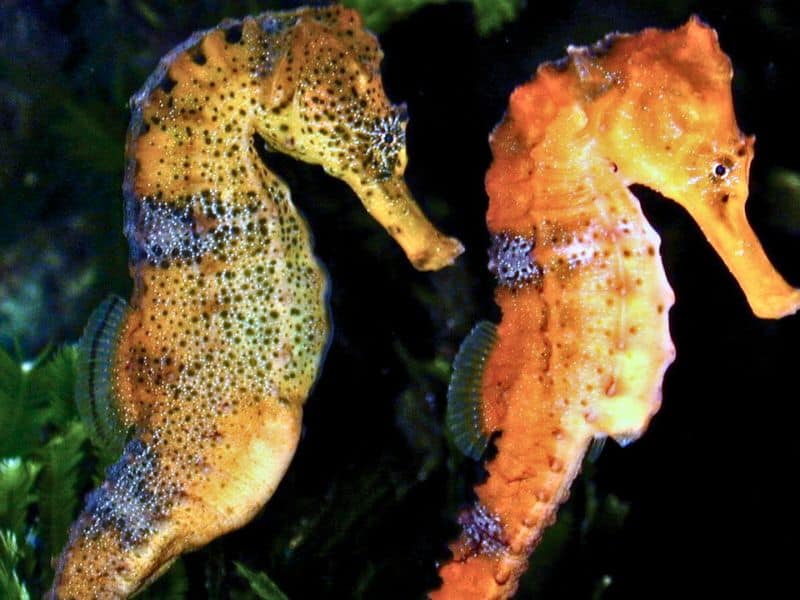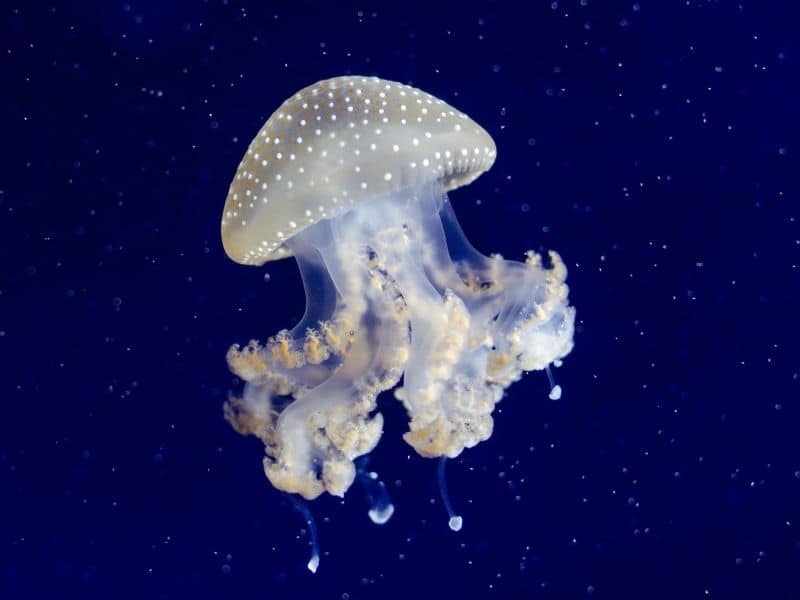6. Communication through sounds
During courtship and mating, seahorses can produce sounds that resemble clicks. These vocalizations are part of their communication strategy, helping to strengthen their bond and express their readiness to mate. Communication is so important in a couple!
7. What do seahorses eat?
Seahorses are gourmet eaters: their menu includes small crustaceans like amphipods, copepods, and krill. They also indulge in fish larvae and other tiny swimming invertebrates. An aquatic buffet, indeed!
8. Feeding behavior of seahorses
As ambush predators, seahorses don’t chase their food. They stay still, waiting for a delicious morsel to come close. When the opportunity arises, they extend their elongated snouts like a vacuum to suck up their prey!
Adult seahorses can eat between 30 and 50 times a day, depending on how much food is available! This is crucial since they have no stomach, so they need to constantly feed to keep their energy up. Never hungry!
9. How do seahorses swim?
Seahorses are swimmers that steal the show for all divers. Here are some facts about seahorses and their swimming style that will leave you in awe! They are the only fish daring enough to swim vertically. This unusual position helps them glide gracefully through seagrass beds and coral reefs.
They use their dorsal fin (the one on their back) to propel themselves. That fin beats like the heart of a lovesick teenager, allowing them to move forward, albeit not at full speed. Their swimming is slow and a bit clumsy compared to other fish. Don’t imagine a seahorse competing in the aquatic Olympics!
They also have pectoral fins behind their eyes. Those are their steering fins, like a water steering wheel guiding them! They help them maneuver with the precision of a gamer playing with their console.
To top it off, they have a swim bladder that allows them to maintain buoyancy. By adjusting the gas in this bladder, they can control their depth in the water, allowing them to float calmly or swim upwards.
10. Seahorse conservation status
According to the International Union for Conservation of Nature (IUCN) Red List, two species of seahorses are classified as Endangered, while another twelve are Vulnerable. That shows how fragile their situation is!
Seahorses face threats like habitat loss, pollution, climate change, and invasive species. These factors can lead to declines in their populations and affect their natural habitats.
However, initiatives like marine protected areas and stricter regulations on seahorse trade are helping to secure their future.




